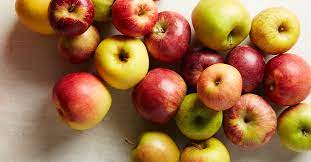Generally speaking, Gala apples and Fuji apples are similar in their sugar content. Both types are sweet enough to serve as desserts, and both are very juicy. Both are also very crisp and have an excellent texture. However, there are some notable differences between them.
Ambrosia apples
Compared to Ambrosia apples, Gala or Fuji apples have more sugar. In fact, the average Gala or Fuji apple contains 15-18 grams of sugar on average. This makes them great snacks. They also pair well with salty and savory foods.
There are two primary reasons why Gala or Fuji apples have more sugar than Ambrosia apples. First, Ambrosia apples are not as common as Fuji apples. Second, Ambrosia apples tend to be larger. This means that they are heavier than most other apples.
The sweetness of Gala or Fuji apples is largely due to the fruit’s natural sugars. These sugars overpower the tartness of the apples. This is great news for people who don’t like the tartness of Ambrosia apples.
Ambrosia apples are also known for their sweet, honeyed flavor. They are also known for their complex floral aromas. They are a favorite apple in North America. They can be eaten raw, or cooked in baked goods. Their rich, sweet taste makes them a great snack.
Gala apples
Whether you are a kid, a parent, a chef or just looking for a healthy snack, Gala apples are a delicious and healthy choice. They are full of antioxidants, vitamins and polyphenols, which are plant compounds that help protect our body from free radical damage. These include vitamin C, which helps build collagen and boosts our immune system.
In the United States, Gala apples are becoming more and more popular. They are usually available in the fall, but are sometimes scarce in the early months. They are delicious and a great addition to applesauce and apple crumble. They can also be found in a variety of other recipes that call for soft apples.
Compared to other varieties, Gala apples have more sugar per serving. The sugar content is mostly fructose. The fructose content is largely different from processed sugar. Fructose is naturally occurring.
Gala apples are also a great source of fiber, which can help regulate digestion and blood sugar levels. Fiber can also help manage appetite.
Pacific Rose apples
Among the sweetest varieties of apples, Gala or Fuji apples have more sugar than Pacific Rose apples. These apples are often eaten fresh, but can also be cooked, baked, or juiced.
These sweet and crisp apples are usually green or yellow. Their high sugar content makes them popular in grocery stores. They are delicious when cooked, but also great for fresh salads. They also hold up well in baked recipes.
Gala apples were originally bred in New Zealand in the early 1930s. They have a lovely, crisp texture, and a sweet, floral aroma. They are also easy to cut with a corer. Their yellow and red stripes make them striking.
Pacific Rose apples are a hybrid of Gala and Splendor varieties. They have a unique, sweet flavor, and are considered one of the best Russet apples. They are also known for their pink color and nutty aroma. They are also popular in New Zealand. They are also gaining popularity in North America.
Red Delicious apples
Whether you want to snack on a handful of Gala or Fuji apples, add them to a salad, or make a delicious apple pie, these apples have a deliciously sweet flavor that will satisfy your cravings. They are available year-round in warm climates all over the world.
Depending on the variety, an apple can have anywhere from nine to 19 grams of sugar. If you are a diabetic, it may be important for you to know how much sugar you are consuming.
The sweetness level of a Fuji or Gala apple can vary from mild to very sweet. These apples have a crisp, juicy texture and are a popular choice for eating raw or cooking. They are available in red, yellow, and green varieties. They are popular in the United States.
Conclusioin
These apples have a rich floral fragrance and a tender, juicy texture. They are easy to find in stores, and are perfect for raw or cooked eating. They are also delicious for salads and juices. They are easy to core with a corer. They are best served fresh.

